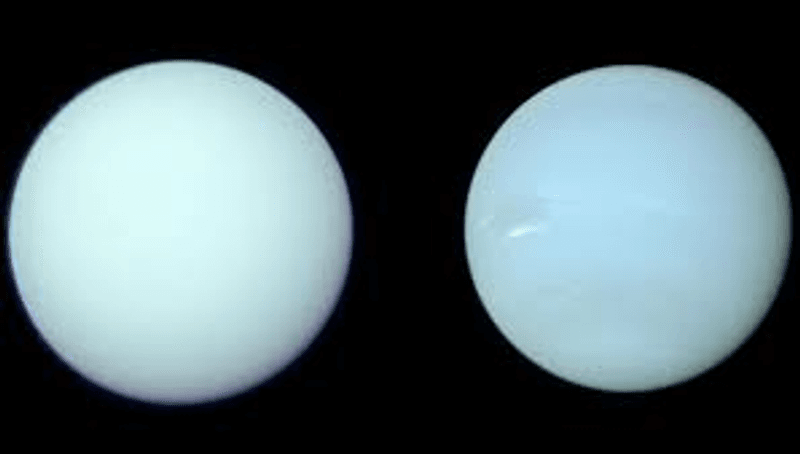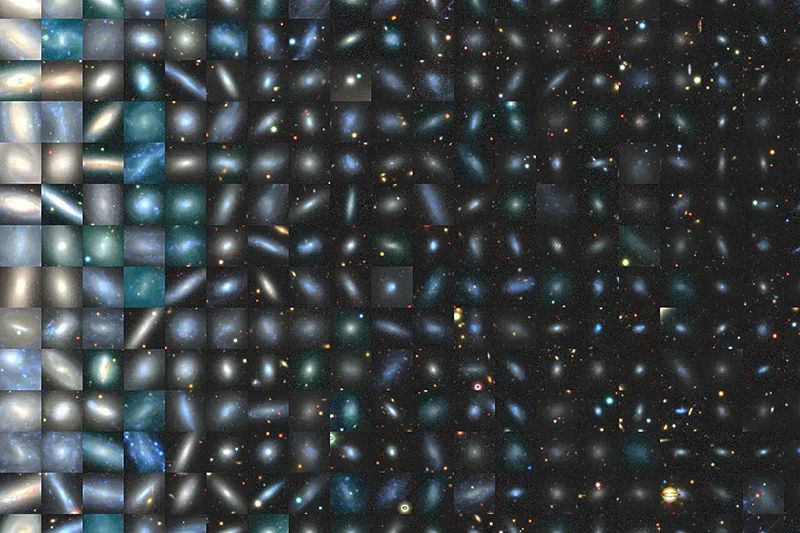Uranus and Neptune were only visited once by human spacecraft when Voyager 2 passed by them almost 40 years ago. During those visits, scientists measured peculiar magnetic fields unlike those seen around other planets. A recent paper suggests that the Uranus measurements might have been messed up by the Sun, but in general, it has been difficult to explain the behavior. New research suggests that the magnetic weirdness might be due to oceans below the atmosphere.
Giant planets tend to have gassy layers on the outside, liquid layers down below, and a solid core at their center. Burkhard Militzer from the University of California Berkeley has created a computer model to try and explain the magnetic field. It suggests that below the atmosphere of the planets, there is water, methane, and ammonia.
The pressures below the atmosphere are high, creating two distinct layers: below, a layer of oily hydrocarbons and ammonia, which have lost some hydrogen, and above, the water and hydrogen. The model suggests that Uranus has a rocky core the size of Mercury. This is surrounded by an 8,000-kilometer (5,000-mile) thick layer rich in hydrocarbons. Above it sits a layer with the same thickness but made of water, and, to top it all off, an atmosphere 5,000 kilometers (3,000 miles) thick.
Neptune is similar in size to Uranus but not exactly a twin. It is more massive but smaller. The model suggests a thinner atmosphere and a larger core (roughly the size of Mars) but two equally thick layers of water and hydrocarbons.
“We now have, I would say, a good theory why Uranus and Neptune have really different fields, and it’s very different from Earth, Jupiter, and Saturn,” Militzer said in a statement. “We didn’t know this before. It’s like oil and water, except the oil goes below because hydrogen is lost.”
The measurements from Voyager 2 suggest that the magnetic fields of Uranus and Neptune are disorganized, very different from the nice north-south field we experience here on Earth. For Militzer, the reason is to be found in the lack of convection in these two worlds. The hydrocarbon layer is stably stratified almost like a plastic polymer, according to the model, so it doesn’t allow convection.
“If you ask my colleagues, ‘What do you think explains the fields of Uranus and Neptune?’ they may say, ‘Well, maybe it’s this diamond rain, but maybe it’s this water property which we call superionic,’” he said. “From my perspective, this is not plausible. But if we have this separation into two separate layers, that should explain it.”
It will be interesting to see if this model can consistently recreate the layers even with the new insights from the reanalysis of Voyager 2's magnetic data. A solar storm is believed to have caused Uranus to exhibit several strange magnetic features that are not actually present in its usual state.
A paper discussing these results is published in Proceedings of the National Academy of Sciences.





